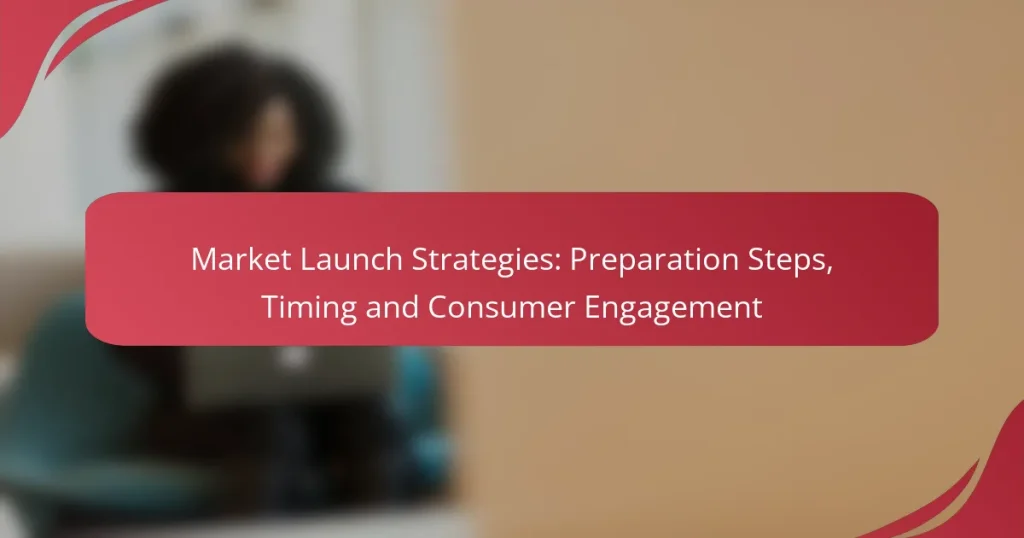Launching a product in the e-commerce space requires a well-crafted strategy that combines targeted marketing, influencer partnerships, and a robust online presence. Preparation is key, involving detailed market research, audience identification, and a clear value proposition. Additionally, timing plays a crucial role; aligning your launch with market trends and consumer behavior can maximize visibility and drive sales effectively.
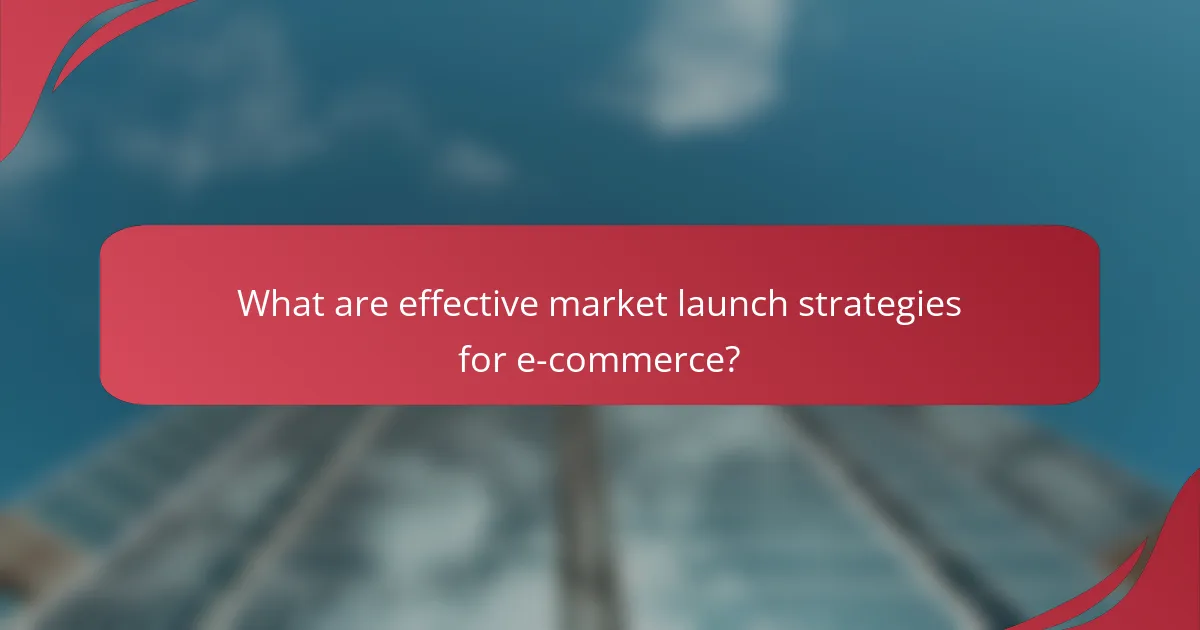
What are effective market launch strategies for e-commerce?
Effective market launch strategies for e-commerce involve a combination of targeted marketing, influencer collaborations, and strong online presence. These strategies help businesses reach their audience, build brand awareness, and drive sales during the critical launch phase.
Targeted digital marketing campaigns
Targeted digital marketing campaigns focus on reaching specific consumer segments through tailored messaging and channels. Utilizing data analytics, businesses can identify their ideal customers and create ads that resonate with their interests and behaviors.
Consider using platforms like Google Ads or Facebook Ads, which allow for precise targeting based on demographics, interests, and online behavior. Set clear objectives for your campaigns, such as increasing website traffic or generating leads, to measure success effectively.
Influencer partnerships for brand visibility
Partnering with influencers can significantly enhance brand visibility and credibility. Influencers have established trust with their followers, making their endorsements powerful tools for reaching new customers.
Choose influencers whose audience aligns with your target market. Collaborations can include sponsored posts, product reviews, or giveaways. Ensure that the partnership feels authentic to maintain credibility and engagement with potential customers.
Utilizing social media platforms
Social media platforms are essential for engaging with consumers and building a community around your brand. Regularly posting content that showcases your products, shares customer testimonials, or provides valuable information can foster interaction and loyalty.
Utilize features like stories, polls, and live videos to create dynamic content that encourages participation. Each platform has its strengths; for example, Instagram is great for visual storytelling, while Twitter can be effective for real-time updates and customer service.
Email marketing for customer engagement
Email marketing remains a powerful tool for engaging customers and nurturing leads. Building an email list prior to launch allows you to communicate directly with interested consumers and keep them informed about your products.
Craft compelling newsletters that provide value, such as exclusive offers, product updates, or informative content. Segment your audience to send personalized messages that resonate with different customer groups, increasing open and conversion rates.
Search engine optimization for organic reach
Search engine optimization (SEO) is crucial for improving your e-commerce site’s visibility in search engine results. By optimizing your website’s content and structure, you can attract organic traffic and potential customers without relying solely on paid advertising.
Focus on keyword research to identify terms your target audience is searching for. Implement on-page SEO techniques, such as optimizing product descriptions, meta tags, and images. Regularly updating your content and ensuring mobile-friendliness can further enhance your search rankings.
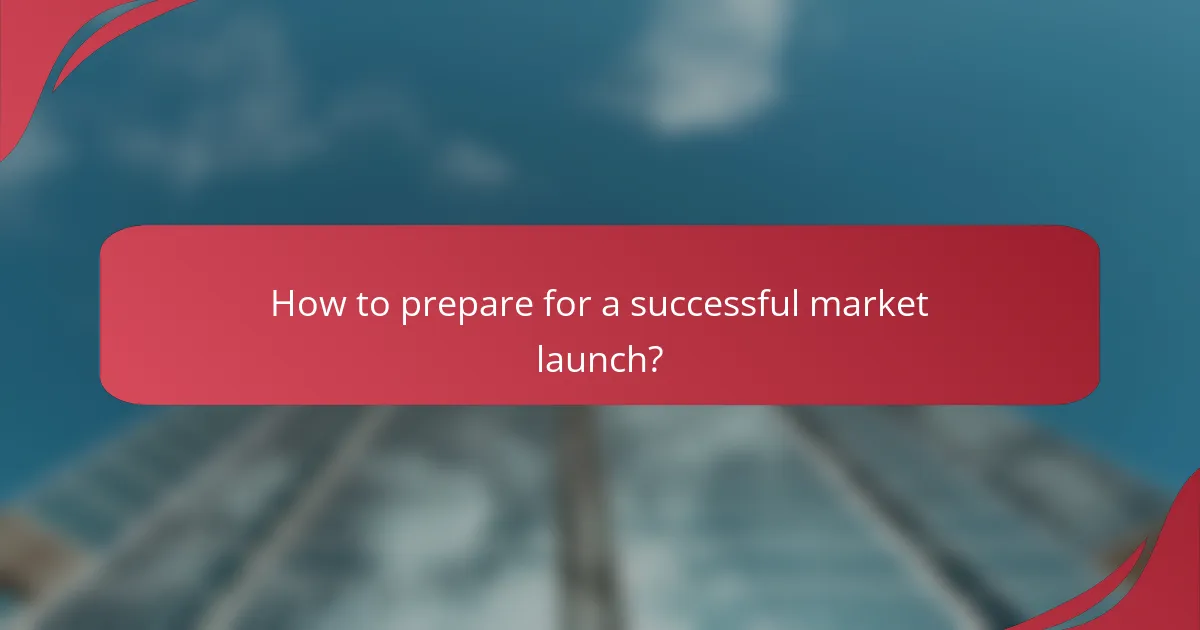
How to prepare for a successful market launch?
Preparing for a successful market launch involves thorough planning, strategic research, and effective consumer engagement. Key steps include understanding the market landscape, identifying your target audience, and articulating a compelling value proposition.
Conducting market research
Market research is essential for understanding the competitive landscape and consumer needs. Start by analyzing industry trends, competitor offerings, and potential gaps in the market. Utilize surveys, focus groups, and online analytics to gather data that informs your strategy.
Consider both qualitative and quantitative methods. Qualitative insights can reveal consumer motivations, while quantitative data provides measurable trends. Aim to collect data from a diverse range of sources to ensure a comprehensive view of the market.
Defining target audience and buyer personas
Clearly defining your target audience is crucial for tailoring your marketing efforts. Begin by segmenting the market based on demographics, psychographics, and purchasing behavior. This segmentation will help you identify specific groups that are most likely to engage with your product.
Creating detailed buyer personas can further enhance your understanding. These personas should include information such as age, income, interests, and pain points. Use these profiles to guide your messaging and marketing channels, ensuring that your approach resonates with your intended audience.
Developing a unique value proposition
A unique value proposition (UVP) articulates what sets your product apart from competitors. It should clearly communicate the benefits and advantages that your offering provides to consumers. Focus on how your product solves a problem or fulfills a need better than alternatives.
To craft an effective UVP, consider using a simple formula: identify the target audience, the problem they face, and how your product uniquely addresses that issue. Test your UVP with potential customers to ensure it resonates and refine it based on their feedback.
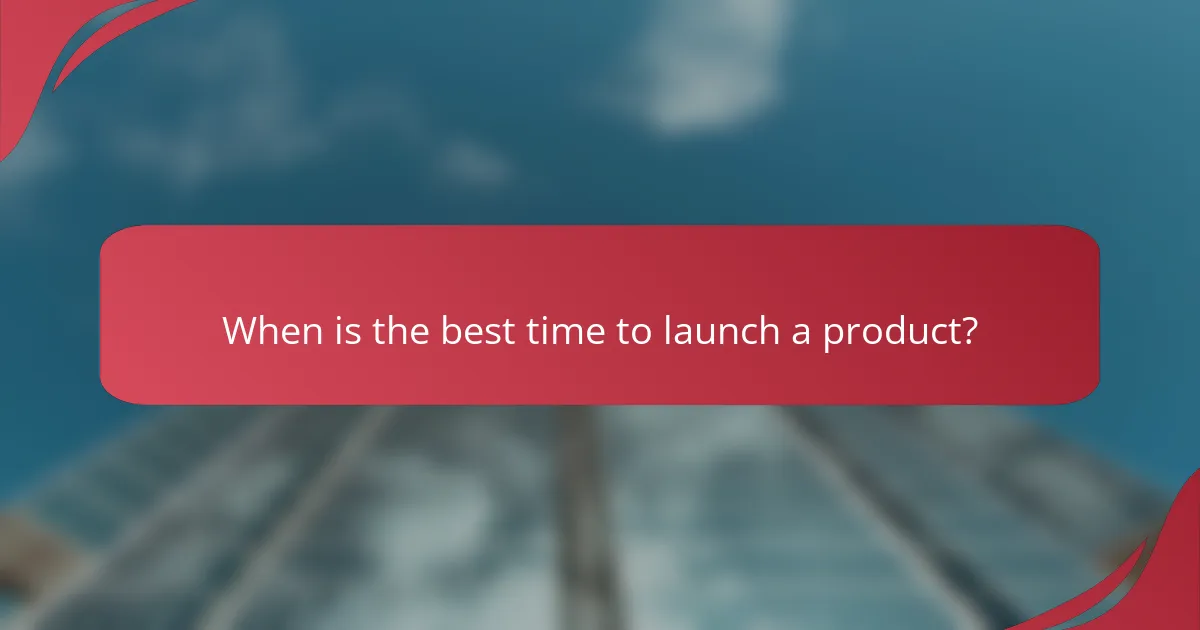
When is the best time to launch a product?
The best time to launch a product depends on various factors including market trends, consumer behavior, and competitive landscape. A well-timed launch can significantly enhance visibility and sales, while a poorly timed one may lead to missed opportunities.
Analyzing seasonal trends and consumer behavior
Seasonal trends greatly influence consumer purchasing patterns. For instance, many consumers are more inclined to buy certain products during holidays or specific seasons, such as winter clothing in fall or outdoor gear in spring.
Understanding these trends requires analyzing past sales data and current market research. Tools like Google Trends can help identify peak interest periods, allowing businesses to align their launches with consumer readiness.
Timing based on competitor launches
Monitoring competitor launches is crucial for strategic timing. If a competitor is set to release a similar product, launching too close may dilute your market share or create confusion among consumers.
Consider launching either before or after a competitor’s release to capitalize on their marketing efforts or to fill a gap in the market. This approach can help differentiate your product and attract attention at the right moment.
Aligning with major shopping events
Major shopping events like Black Friday, Cyber Monday, or back-to-school sales present excellent opportunities for product launches. These events attract high consumer traffic and can lead to increased sales if timed correctly.
Plan your launch to coincide with these events, ensuring you have the necessary marketing and inventory in place. This alignment can maximize visibility and capitalize on heightened consumer spending during these periods.
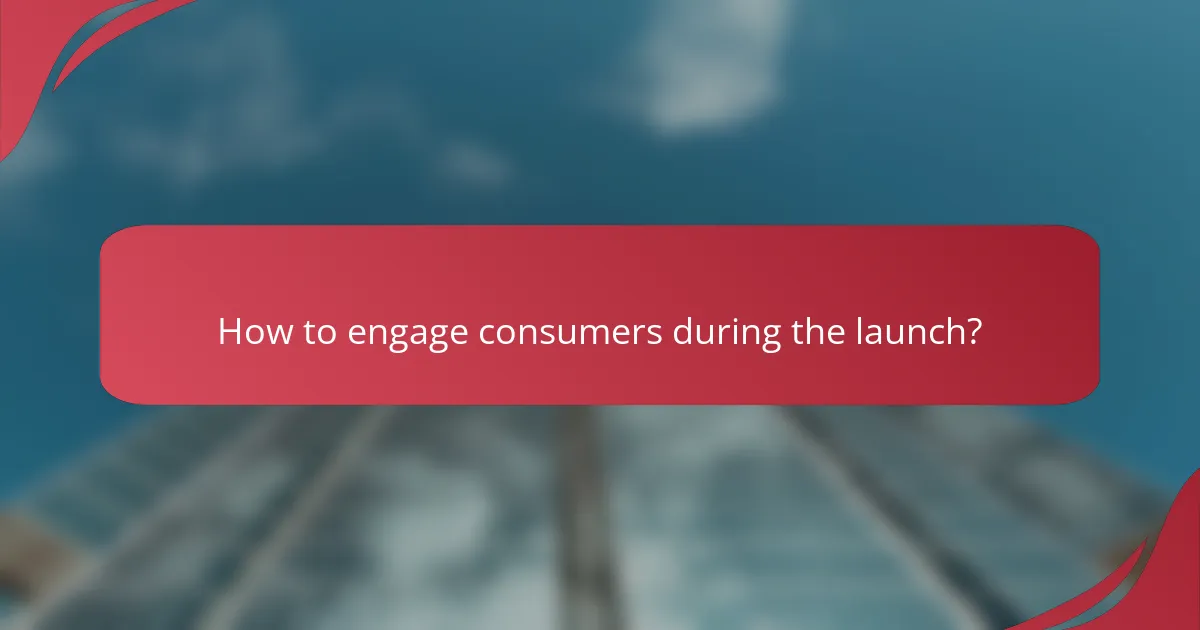
How to engage consumers during the launch?
Engaging consumers during a product launch is crucial for building anticipation and driving initial sales. Effective strategies include interactive campaigns, exclusive offers, and live events that foster direct interaction with the audience.
Interactive pre-launch campaigns
Interactive pre-launch campaigns create buzz and excitement around your product before it hits the market. Consider using social media polls, contests, or sneak peeks to involve potential customers and gather feedback.
For instance, a beauty brand might invite followers to vote on their favorite product features, creating a sense of ownership and investment in the launch. This not only boosts engagement but also helps refine the product based on consumer preferences.
Exclusive offers and promotions
Exclusive offers and promotions can incentivize early purchases and enhance consumer interest. Limited-time discounts, bundled deals, or loyalty rewards can motivate potential buyers to act quickly.
For example, offering a 20% discount for the first 100 customers or a free gift with purchase can create urgency. Ensure that these promotions are well-publicized through email campaigns and social media to maximize reach.
Live events and webinars for direct interaction
Live events and webinars provide an opportunity for real-time interaction with consumers, allowing them to ask questions and learn more about your product. These events can be hosted online or in-person, depending on your target audience and resources.
Consider organizing a launch party or a webinar where you showcase the product, share its benefits, and engage with attendees through Q&A sessions. This direct engagement can significantly enhance consumer trust and interest in your brand.

What metrics should be tracked post-launch?
Post-launch, it is crucial to track several key metrics to evaluate the success of your market launch. These metrics provide insights into sales performance, customer satisfaction, and overall brand impact, helping you make informed decisions for future strategies.
Sales performance and revenue growth
Sales performance is a primary indicator of your launch’s success. Track total sales volume, revenue growth rates, and market share changes over time. Aim for a clear understanding of how your product is performing against initial projections, ideally within the first few months post-launch.
Consider segmenting sales data by demographics or regions to identify trends. For example, if you launch a product in Europe, monitor sales in different countries to see where demand is strongest. This can inform future marketing efforts and inventory management.
Customer feedback and satisfaction levels
Customer feedback is essential for understanding how well your product meets market needs. Use surveys, social media monitoring, and direct customer interactions to gather insights on satisfaction levels. Aim for a response rate of at least 10-15% for meaningful data.
Focus on key satisfaction metrics such as Net Promoter Score (NPS) and Customer Satisfaction Score (CSAT). These can help gauge loyalty and overall contentment. Additionally, pay attention to common themes in feedback to identify areas for improvement or potential product enhancements.
